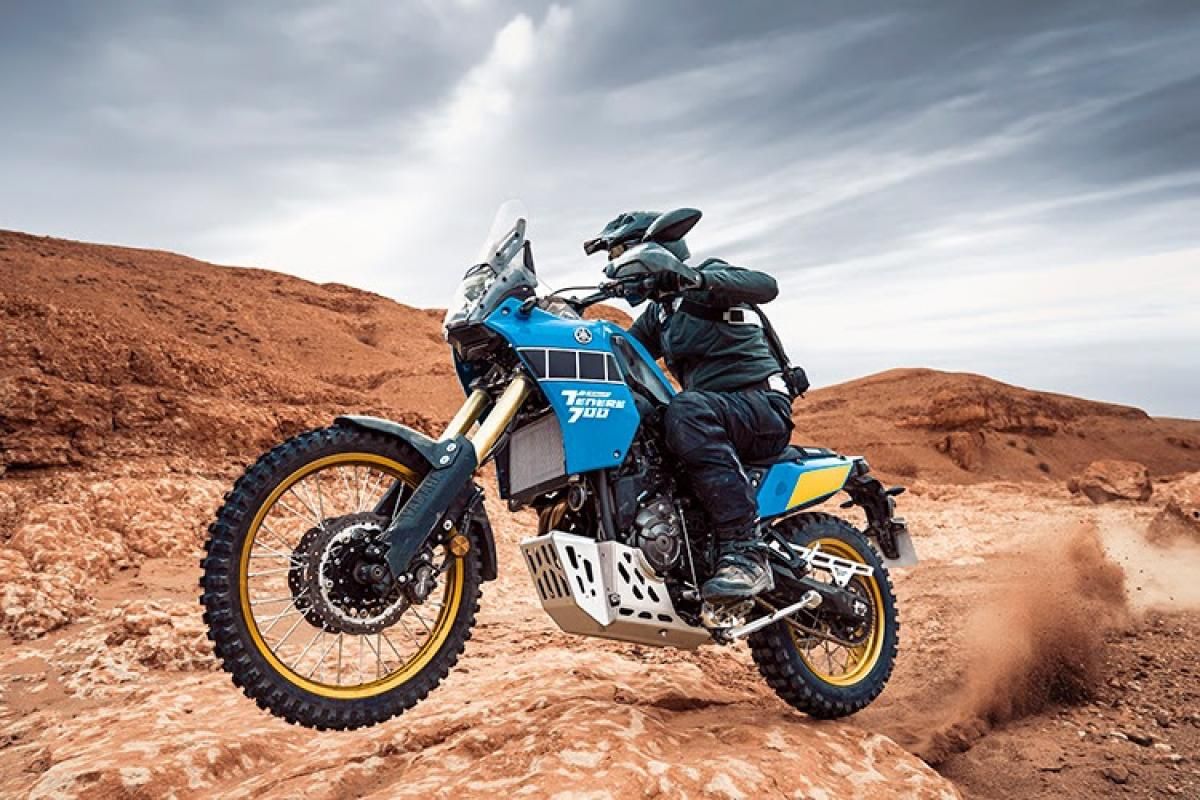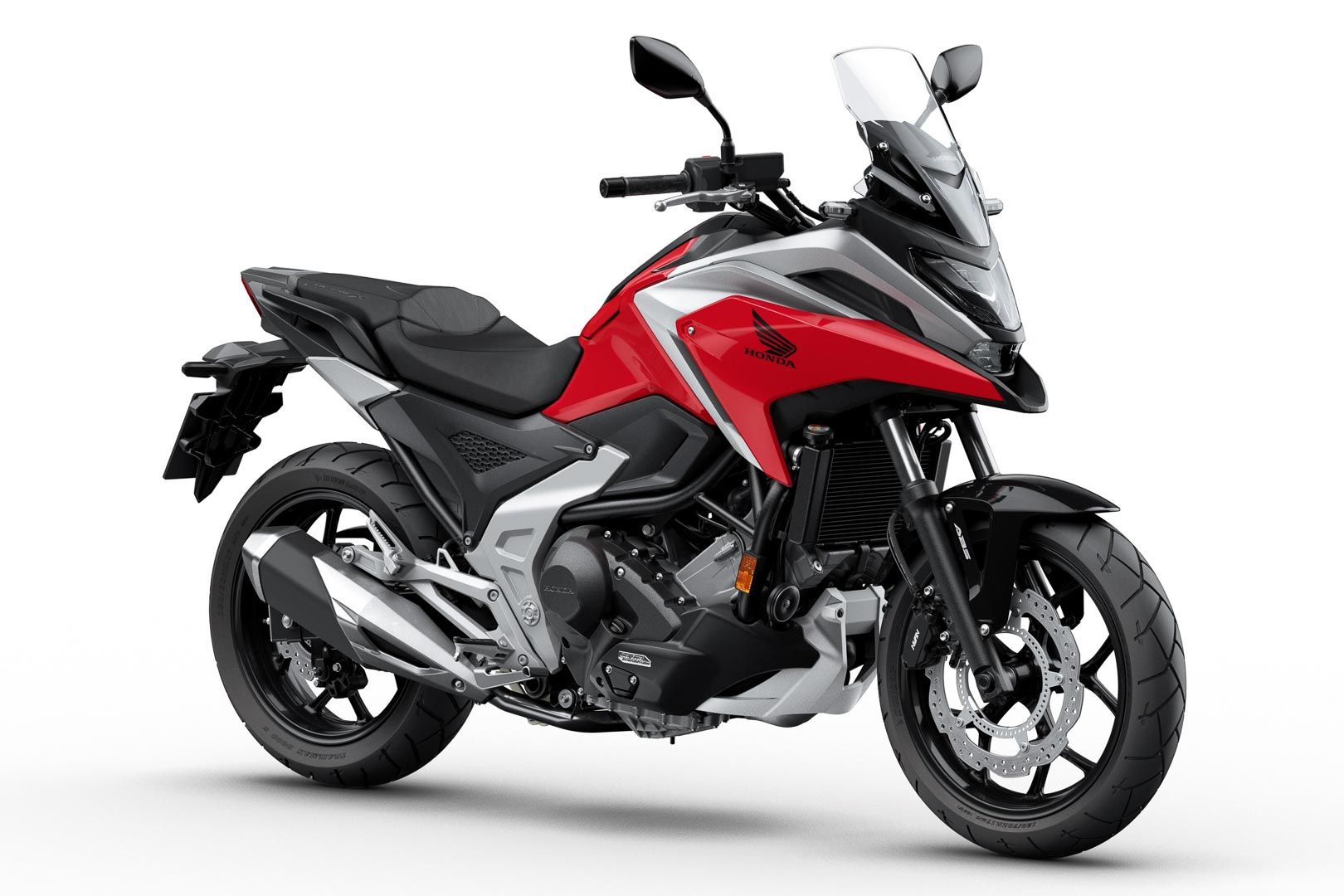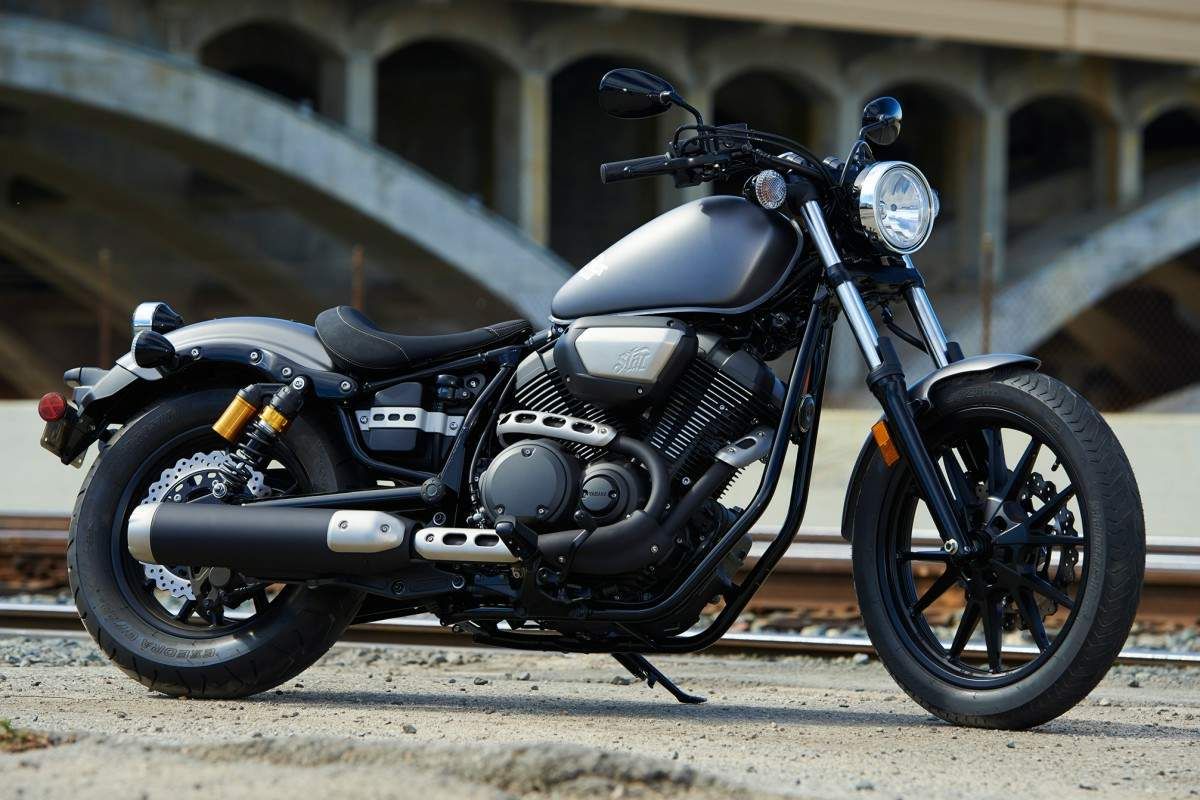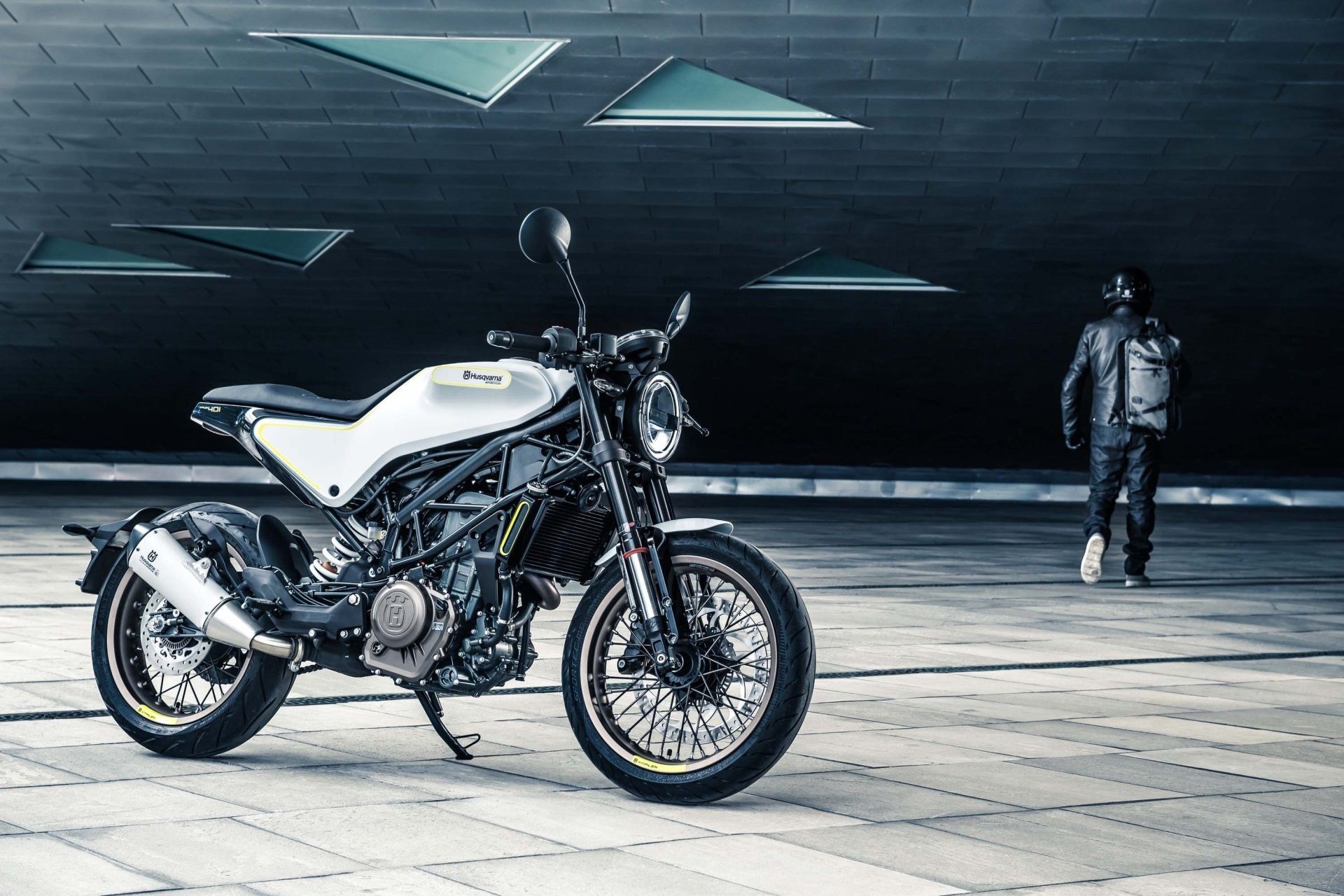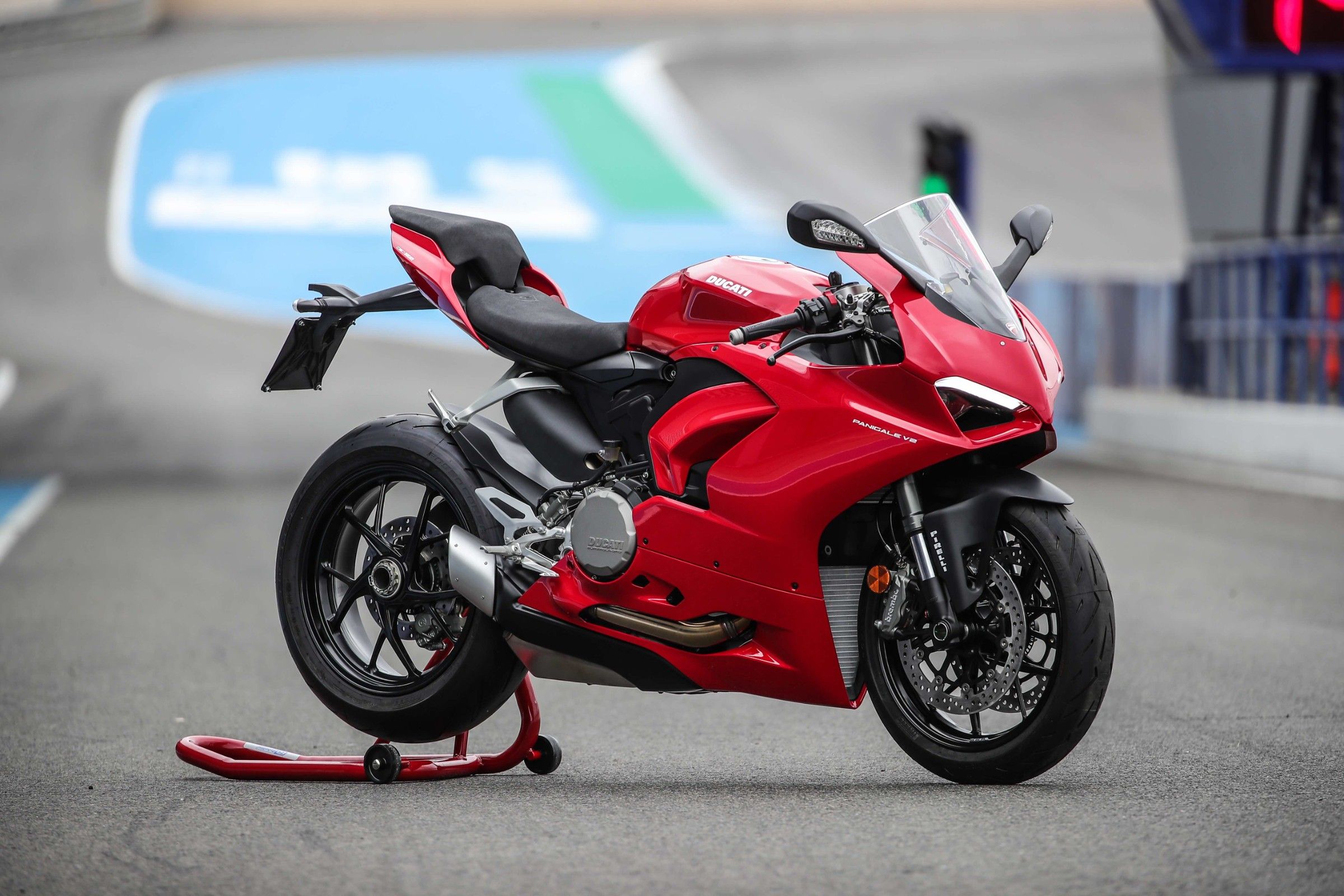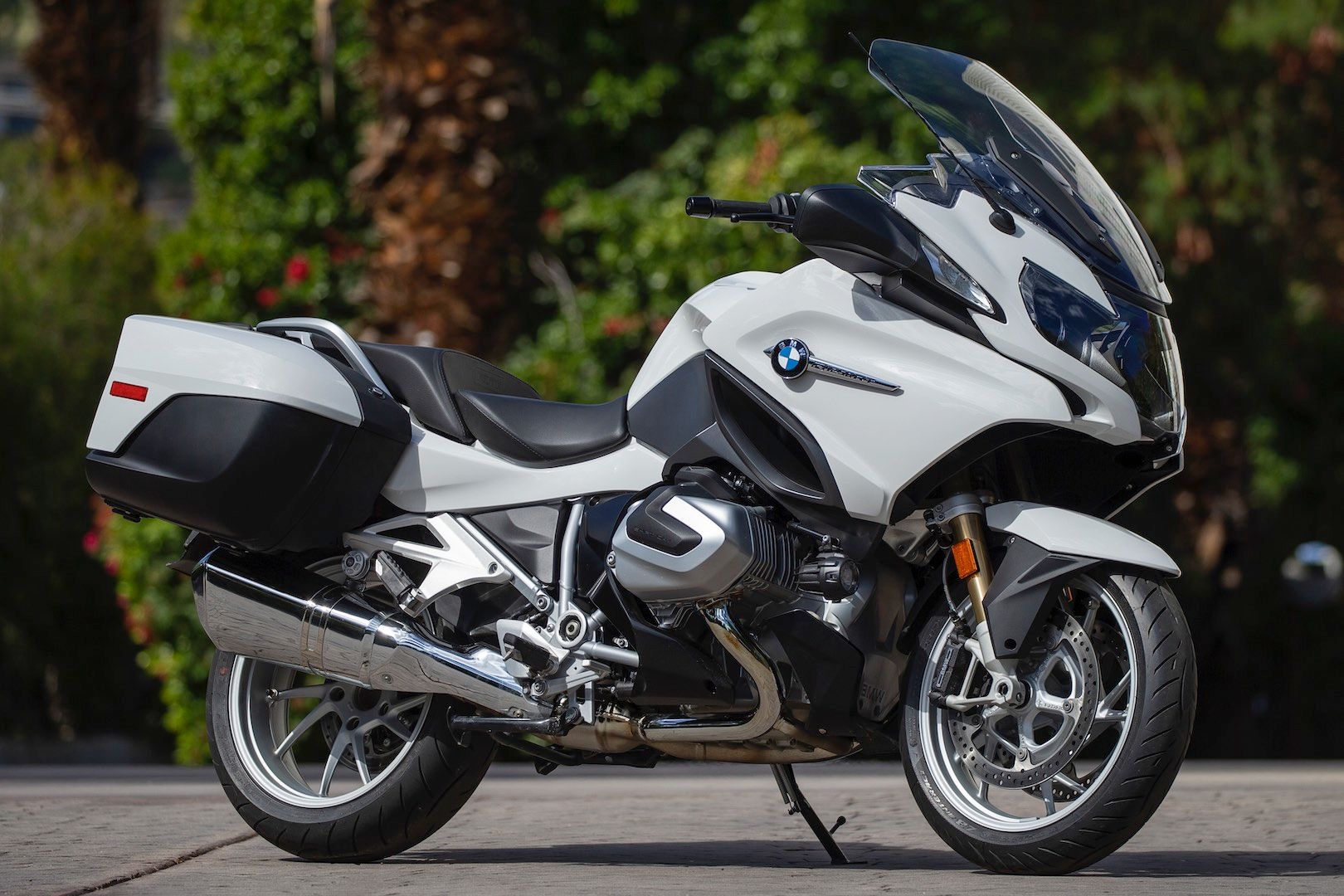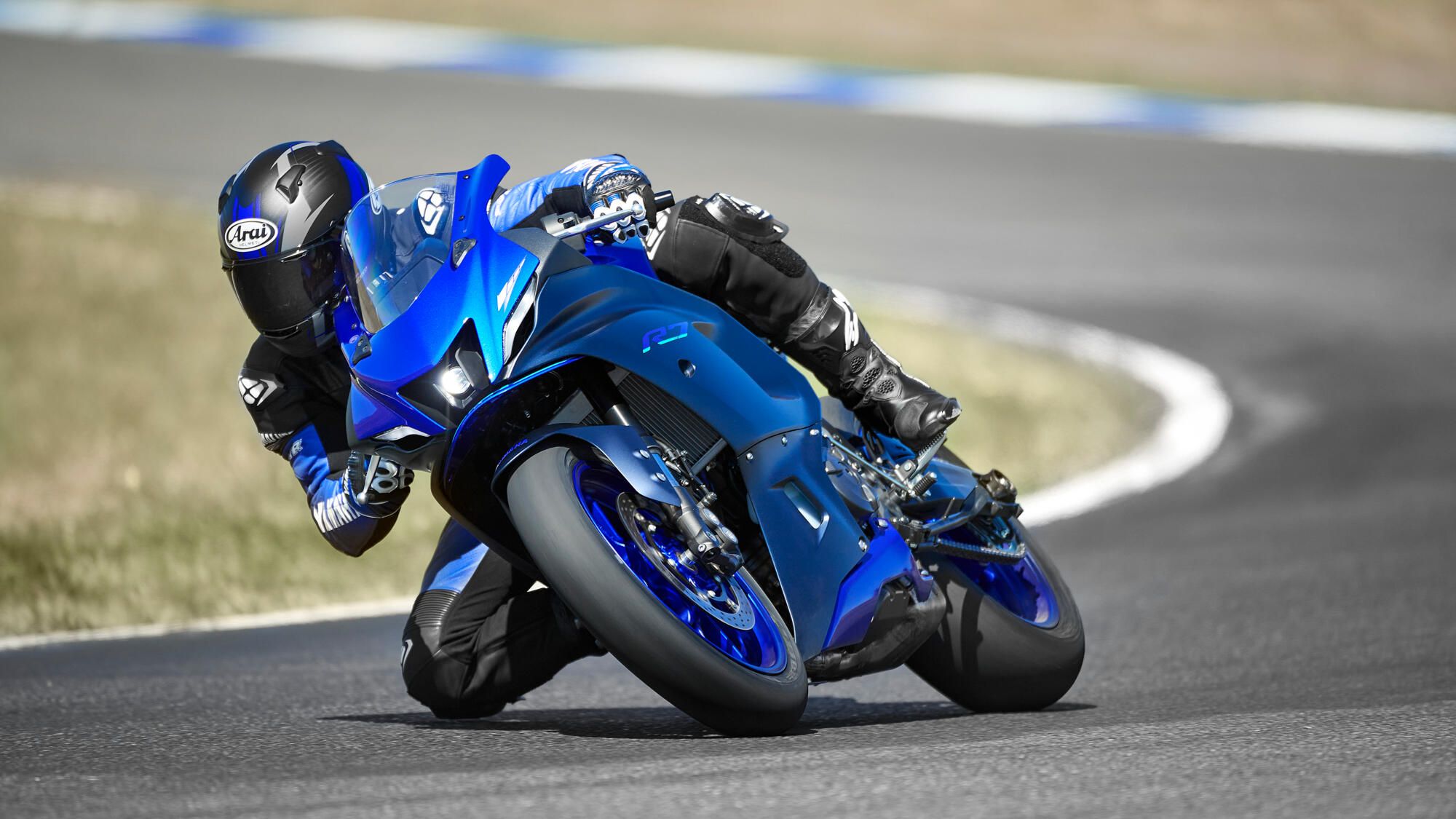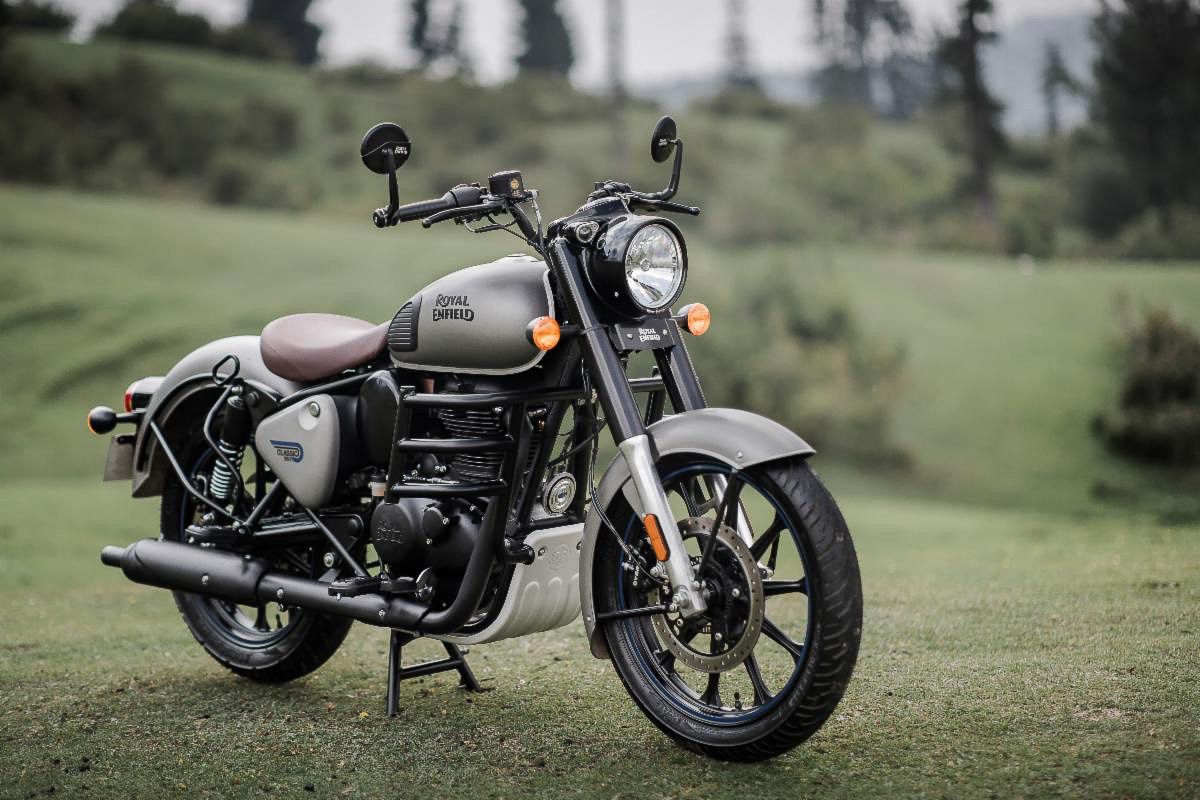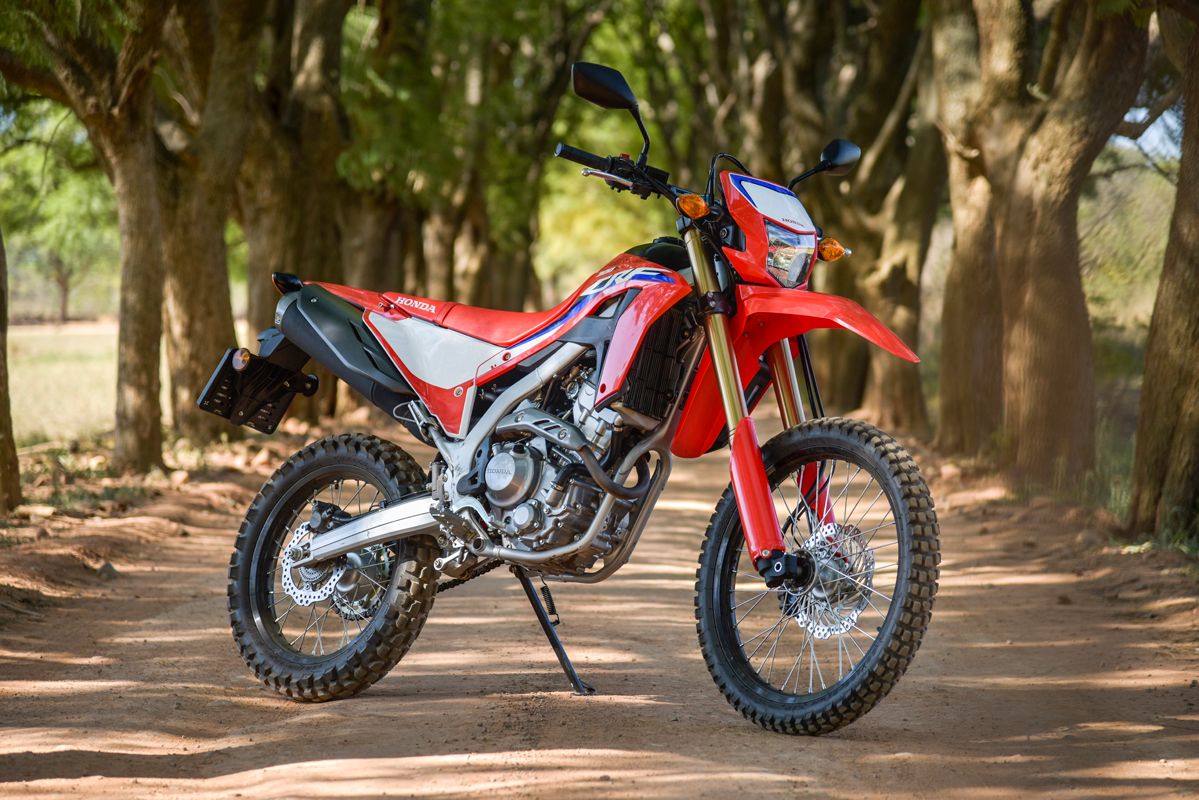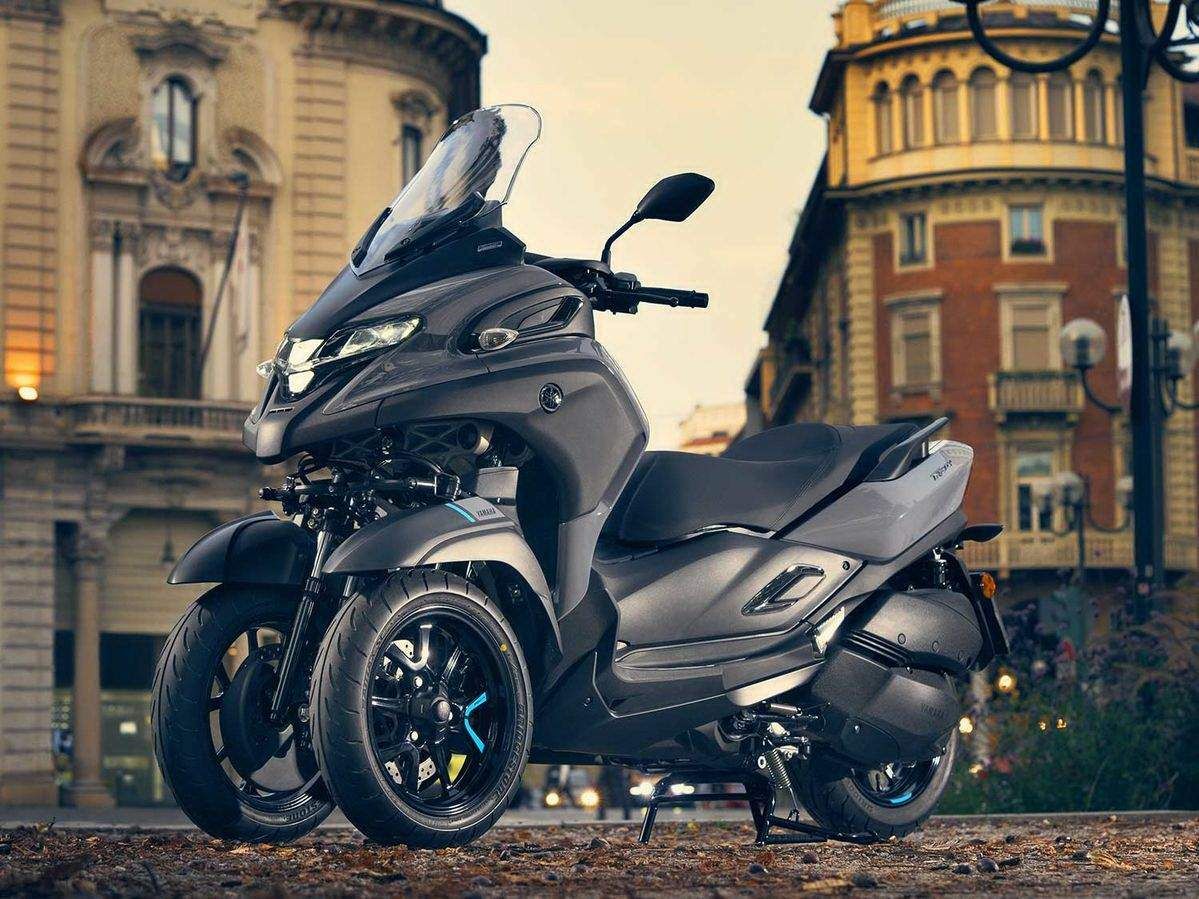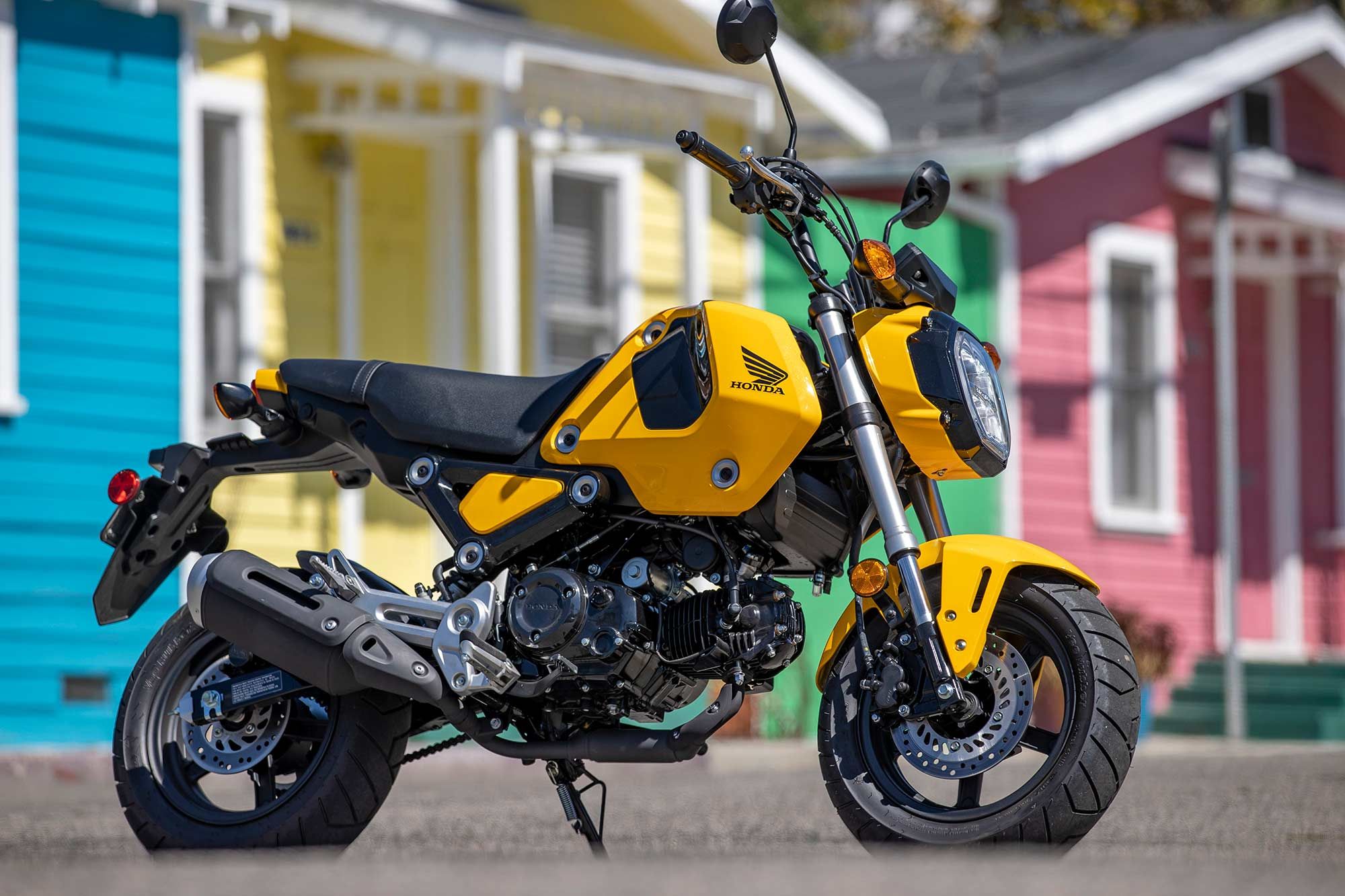Bikes will always be more fuel-efficient than cars, even if they might lose out on practicality. But, what are the most fuel-efficient bikes? Obviously, this should be a list of 50cc scooters, all giving 200 miles per gallon, but that would just be boring and not representative of how we ride in the real world; so we've compiled a list of the most efficient models in different motorcycle categories.
Adventure Bike - [Yamaha Ténéré 700->art183700
The Yamaha Ténéré 700 comes with the parallel-twin engine first seen in the MT-07 and used in the YZF-R7, which also appears in this list. Due to different rates of tune between the models, not to mention, the variety of manner in which the bikes will be ridden, it’s not possible to quote one figure for all three bikes. But, the T7 can squeeze out around 55 miles per gallon of gas while still being a very capable adventure bike, that will lose very little to its larger rivals in terms of ability.
Of course, less fuel used means less fuel carried for a given range and this will have a huge impact on how the T7 handles the rough, technical going. The T7 has been praised for its relative simplicity and there is something to be said for lighter weight not needing quite as many electronic aids to enable the rider to actually handle it.
All-round Practical Bike - Honda NC750X
Honda is known for manufacturing a huge range of motorcycles, from the mundane to the exciting. The NC750X sits somewhere in the middle. It is practical - by tilting the parallel-twin engine forwards, it created a large empty space where the gas tank should go (it sits under the seat), which can fit two full-face helmets - and, despite its rather uninspiring specification, it’s perky enough to be more than a simple commuter bike.
Honda claims 80 miles per gallon, but, in reality, you can expect around 60 miles per gallon. A handy feature is a real-time fuel economy gauge on the digital dash which allows you to monitor consumption while you ride, and teaches you what different throttle openings do to the consumption.
It might not be the most exciting way to go riding, but if you are using a motorcycle to save fuel costs, then it becomes a game in itself.
Cruiser - Yamaha Bolt R
With three bikes on the list, Yamaha seems to have made a specialty of building bikes that are not only frugal, but also bikes that you might actually want to ride.
Japanese attempts at building cruisers have not always been successful, certainly in terms of styling, but the Bolt changed all that. Aimed squarely at the Harley Davidson Sportster class of cruiser, the Bolt R (the base Bolt has been discontinued) has it all: looks, V-twin-engine, performance, handling, and, most relevant of all, frugal thirst.
Yamaha claims 51 miles per gallon and that isn’t far off the 52 miles per gallon fuelly.com registers from 51 user submissions. Weighing around 40 pounds less than a Harley Sportster 1200 helps in this regard.
If you are committed to buying American, then both the Indian Scout and Harley Sportster 1200 will return 40-45 miles per gallon, which isn’t too far behind the Yamaha.
However, there is a caveat: the Kawasaki Vulcan 900 has a gas tank that holds a huge two gallons more than the Indian Scout, Harley Sportster, and Yamaha Bolt. So, while it may not be any more fuel-efficient, a tank will get you a lot further, making it more practical.
If even all those cruisers are too thirsty and yet you must still own a cruiser, then your only recourse is to look at the Honda Rebel 300 or the Yamaha V-Star 250, both of which will give consumption figures into the 70 miles per gallon range, although it will take you a long time to get anywhere!
Small Displacement - Husqvarna Vitpilen 401/KTM 390 Duke
This is a difficult class to assess as there are many motorcycles in the 300 - 500cc range and all of them will give extremely good consumption figures. But, if we’re talking a gas-sipping model that you might actually want to own and doesn’t look like you chose it because it is cheap to run, then it would be hard to beat the Husqvarna Vitpilen 401/KTM 390 Duke, which are, essentially, the same bike with different clothing.
The engine is punchy and gives performance way beyond what you might expect, but, at the same time, they sip at fuel. Fuelly.com lists an average of 59 miles per gallon, with a best of 73 mpg. It doesn’t seem to matter how hard you ride it, you’ll never dip below 40 mpg.
Choose the Vitpilen 401 and being frugal has never looked so modern and chic.
1000cc Sports Bike - Ducati Panigale V2
Surely an economical 1000cc sports bike is an oxymoron, but, while we are talking about fuel consumption, we have to include sports bikes and the most frugal of all, while still adhering to our criteria of being a bike you’d actually want to own, is rather surprisingly, the Ducati Panigale V2.
Of course, this bike has the traditional V-twin engine and not the new V-4 but doesn’t that make it more of a ‘real’ Ducati?
The factory claims 39 mpg but users on fuelly.com have recorded 45-50 mpg, although we have to suppose that the bike was being ridden with a gentle right hand. Unlock any of the performance, and naturally, the consumption is going to plummet, and we can’t imagine that any owner is going to buy such a bike and not revel in the performance.
The 40 mpg target is about the norm for all the liter superbikes, with the Suzuki GSX-R1000 achieving between 38 and 41 mpg, while the BMW S1000RR clocks 36-38 mpg.
Touring Bike - BMW R1250 RT
Big and heavy, you wouldn’t expect touring bikes to deliver good consumption figures but it seems that 40 mpg isn’t impossible. The best that we can find is the BMW R1250 RT, which fuelly.com users have pegged at an average 41.5 mpg: with a 6.6-gallon gas tank, that gives a theoretical range of 273 miles.
Of course, there are perhaps more factors that will affect that figure on a touring bike than on other classes of motorcycles. A touring bike is likely to be laden with full panniers and top box, not to mention a passenger, all of which will harm fuel consumption as the engine has to be worked much harder to access the performance.
Even huge, barge-like touring motorcycles such as the Harley Davidson Road King have achieved an average of 38.2 mpg, according to fuelly.com, while the KTM 1290 Super Duke GT has an average of 36.8 mpg, which must be a product of using all the considerable performance of the engine, all of the time.
Middleweight Sports Bike - Yamaha YZF-R7
With liter-sportbikes getting ever more hardcore and insanely fast, the middleweight sports bike class is undergoing a bit of a resurgence providing, as they do, just as many thrills in a user-friendly package.
Yamaha’s MT-07-based YZF-R7 delivers a frankly astonishing (and claimed) 58 mpg! Even indulging in fast riding, 50 mpg should be possible. The gas tank is 3.4 gallons so 150 miles between stops is possible but isn’t that rather irrelevant, given that you’ll be enjoying the performance on your favorite back roads or race track rather than cruising the interstates and trying to eke out as many miles as possible.
By comparison, Honda’s aging but still brilliant CBR600RR achieves 40.9 mpg.
Retro - Royal Enfield Classic 350
While Triumph leads the way in the retro or ‘modern classic’ category in terms of breadth of its range, not to mention desirability, the smallest engine in the range is 900cc. For real fuel economy, you have to look to India and the Royal Enfield Classic 350.
A 20-horsepower, 350cc single-cylinder engine might not sound all that exciting, but its simplicity is its trump card. The factory claims 95 miles per gallon, but a more realistic figure, as quoted on fuelly.com, is around 80 mpg, which is plenty in anyone’s book. Tank capacity is 3.4 gallons and that gives a 272-mile range of authentic classic motorcycling.
Even the Classic 500 model will achieve 65 miles per gallon, as will the parallel-twin-engined 650cc models. Looking good has never been as cheap.
Off Road - Honda CFR300L
Fuel consumption might not figure highly with dirt-bike riders, which is strange as we would think that not getting stranded in the middle of nowhere with an empty tank would be a bonus.
Honda’s CRF300L is what is more commonly called a trail bike, with lights and indicators to make it road legal, while still having the tall suspension and light weight to make it useful off-road.
Achieving 73.4 miles per gallon means more time enjoying throwing yourself at the scenery off-road, although the skimpy two-gallon tank won’t give the best range, which is just as well as the seat isn’t one you want to be sitting on for too long!
Trike - Yamaha Tricity
If you think of traditional trikes, they have all the disadvantages of a car - too wide to filter through traffic - and all the disadvantages of a bike - exposed to the elements. But there's a new breed of trikes, with two wheels at the front, which are mounted no wider than the handlebars, meaning that you have all the advantages of a bike but with two important differences. Firstly, in the case of the Yamaha Tricity 300 in some markets, they can be ridden on a car license so you don't need a bike license. Secondly, two front wheels offers much more grip at the front and, therefore stability and reassurance.
Another good idea is that you can lock the mechanism in the upright position before coming to a stop so you don't have to put your feet down. Not essential for experienced riders but for those who are moving from a car to a trike to save money on fuel, it's a useful aid.
According to fuelly.com, the Tricity 300 averages 75 miles per gallon from its 292cc single cylinder engine, and the resulting 28bhp, driving through a CVT gearbox, gives good traffic-beating performance.
Small/Pocket/Beginner - Honda Mini Motos
If you want to be really miserly, then Honda’s range of mini motos is hard, if not impossible, to beat.
There are several models - Grom, Monkey, Dax, and Navi - and all will achieve well over 100mpg. Honda claims the Grom is good for 166 mpg but independent testing suggests 110-120 is more realistic and no one is going to complain about that.
Of course, their use is limited to zipping you around town but isn’t that exactly where we need the best fuel consumption? Any of the Honda mini-motos are perfect for anyone who hasn’t ridden before and wants a motorcycle simply to buzz around on to save money on gas.
If you want a ‘normal-size’ motorcycle, then Honda also has the immortal Super Cub, which fuelly.com users have averaged out at just over 100 mpg.
Conclusion
Obviously, the smaller the engine, the more fuel-efficient the motorcycle will be. However, a small bike is not always suitable for what the rider wants to do with it: you won’t see too many Honda Groms being ridden across the country!
Ultimately, it’s how much of a bike’s performance you use that will determine your fuel consumption, but there are other factors that are within your control that can help.
Correct tire pressures are essential to achieving factory-quoted consumption figures as is a correctly adjusted and well-lubricated chain. Regular oil changes will help reduce friction and wear inside the engine and sticking with the factory-fitted exhaust system will also help. Fitting a louder muffler might be tempting but more noise won’t be the only difference you’ll see!
FAQs
Which bike is the best in fuel consumption?
The best full-size bike for fuel consumption is the Honda NC750X which can achieve a figure of 70 miles per gallon. The best bikes for sipping at fuel are the Honda mini Motos, such as the Grom, Monkey, and Dax, all of which can achieve well over 100 miles per gallon, as can the Super Cub which is a more conventionally-sized scooter.
Are motorcycles good for saving gas?
Absolutely! Even the most powerful sports or touring bikes will give fuel consumption figures that many cars can only dream about.
What motorcycle is good on gas?
All motorcycles are good on gas although, obviously, the larger the displacement of the engine and the higher the power, the more fuel they will use.
What cc bike is best for mileage?
Bikes in the 600-800cc range give the best combination of performance, fun, and fuel consumption.
This might seem like an odd subject for a top ten list, given that motorcycles are hugely more fuel-efficient than cars. Many riders don’t even consider fuel consumption as a factor when buying a bike: it’s an emotional choice, not a practical one. However, there are people who will buy a bike based on its fuel consumption over other figures such as horsepower or torque, or even price. The difficulty in compiling such a list is that we have to rely on manufacturers’ figures, which, we all know, are not always achieved in real-world situations: a run on the dyno at a constant throttle opening (or even computer-controlled variable throttle openings and engine loadings) is not indicative of real-world riding. There are other sources, such as www.fuelly.com which compiles average consumption figures from multiple users and we have used those as much as possible as they represent what owners are getting day-to-day. In order to make this representative of the whole motorcycling market, we have tried to choose the most efficient models from each class of motorcycle. But, even this approach has its problems: in nearly every category, there are different engine capacities; so, obviously, the smaller-engined models are going to be more fuel-efficient. Equally obviously, a list of the most efficient motorcycles would simply be a list of the smallest-engined scooters which achieve in excess of 100 miles per gallon (MPG) and that would be really boring. Another factor to consider is that fuel consumption varies massively depending on who is riding, how they are riding, where they are riding, and so on. Also, scooters might sip at the fuel in their tanks but, often, the tanks will only hold a gallon of petrol so their range is still compromised. As they are scooters, it is unlikely that anyone would want to be riding them out of the city, so that’s not the biggest issue. At the end of the day, we have chosen bikes that are both fun to ride and economical.
FAQ
Q: Which bike is the best in fuel consumption?
The best full-size bike for fuel consumption is the Honda NC750X which can achieve a figure of 70 miles per gallon. The best bikes for sipping at fuel are the Honda mini Motos, such as the Grom, Monkey, and Dax, all of which can achieve well over 100 miles per gallon, as can the Super Cub which is a more conventionally-sized scooter.
Q: Are motorcycles good for saving gas?
Absolutely! Even the most powerful sports or touring bikes will give fuel consumption figures that many cars can only dream about.
Q: What motorcycle is good on gas?
All motorcycles are good on gas although, obviously, the larger the displacement of the engine and the higher the power, the more fuel they will use.
Q: What cc bike is best for mileage?
Bikes in the 600-800cc range give the best combination of performance, fun, and fuel consumption.


